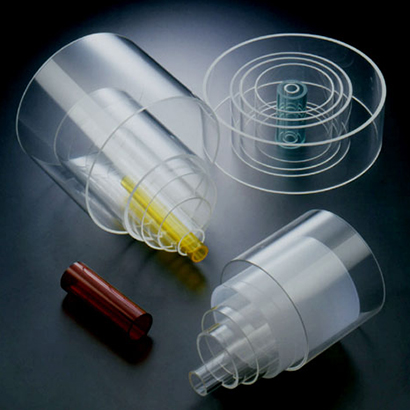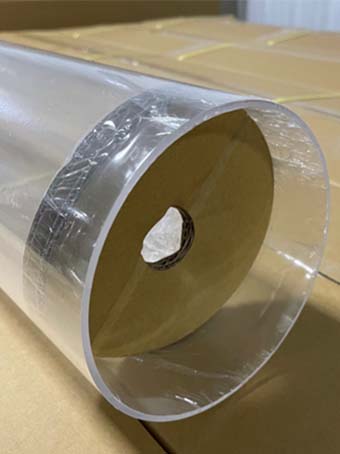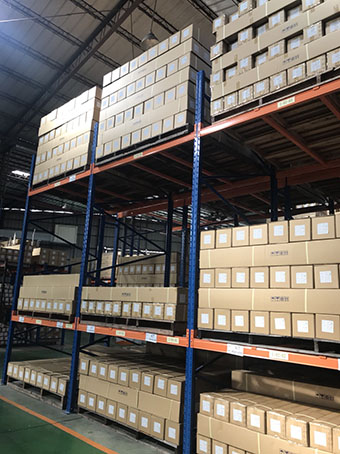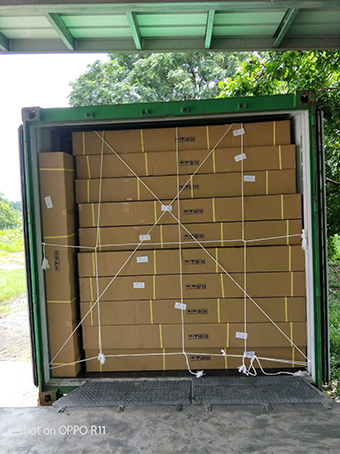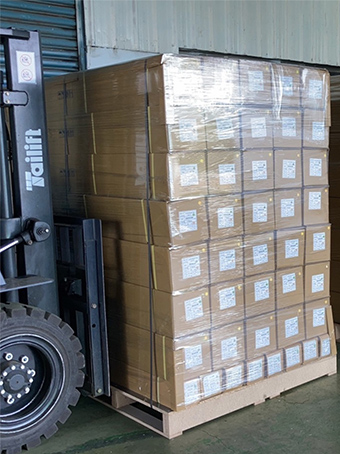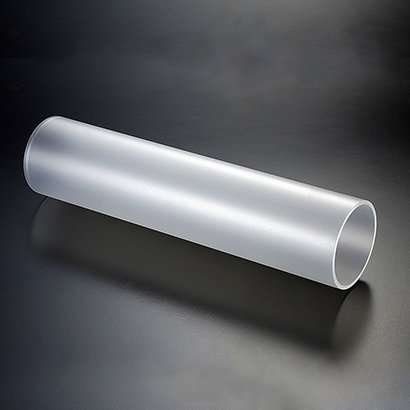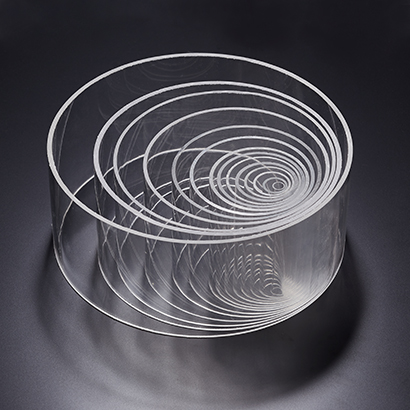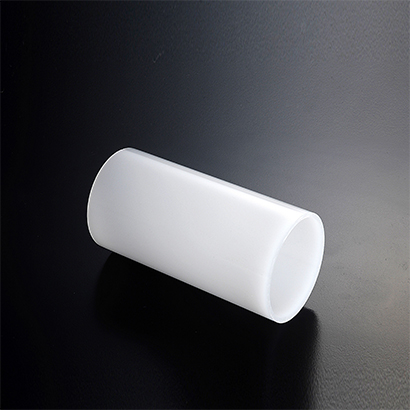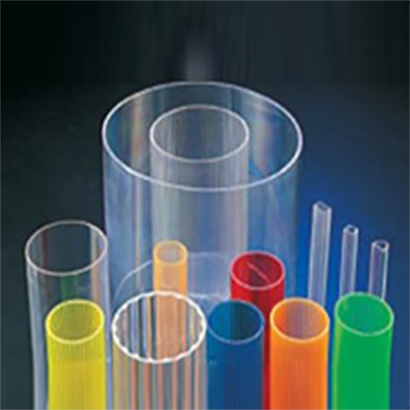Cast Acrylic Tube
We offer cast acrylic tubes with a diameter of 25 mm up to a diameter of 600 mm with different wall thicknesses.
These can be ordered as 1000/1200 mm lengths base on different sizes.
Description
Cast Acrylic Tube Specifications
| Outter Dia. (mm) | Thickness (mm) | ||||||
| 2 | 3 | 4 | 5 | 6 | 8 | 10 | |
| 25 | ● | ● | |||||
| 30 | ● | ● | ● | ||||
| 35 | ● | ● | ● | ||||
| 40 | ● | ● | ● | ● | |||
| 45 | ● | ● | ● | ● | |||
| 50 | ● | ● | ● | ● | ● | ● | ● |
| 60 | ● | ● | ● | ● | ● | ● | ● |
| 65 | ● | ● | ● | ● | ● | ● | ● |
| 70 | ● | ● | ● | ● | ● | ● | ● |
| 80 | ● | ● | ● | ● | ● | ● | ● |
| 90 | ● | ● | ● | ● | ● | ● | |
| 100 | ● | ● | ● | ● | ● | ● | |
| 110 | ● | ● | ● | ● | ● | ● | |
| 120 | ● | ● | ● | ● | ● | ● | |
| 125 | ● | ● | ● | ● | ● | ● | |
| 130 | ● | ● | ● | ● | ● | ● | |
| 140 | ● | ● | ● | ● | ● | ● | |
| 150 | ● | ● | ● | ● | ● | ● | |
| 152 | ● | ● | ● | ● | ● | ● | |
| 160 | ● | ● | ● | ● | ● | ● | |
| 170 | ● | ● | ● | ● | ● | ● | |
| 180 | ● | ● | ● | ● | ● | ● | |
| 200 | ● | ● | ● | ● | ● | ● | |
| 230 | ● | ● | ● | ● | ● | ||
| 250 | ● | ● | ● | ● | ● | ||
| 267 | ● | ● | ● | ● | ● | ||
| 300 | ● | ● | ● | ● | ● | ||
| 330 | ● | ● | ● | ● | |||
| 350 | ● | ● | ● | ● | ● | ||
| 400 | ● | ● | ● | ● | ● | ||
| 450 | ● | ● | ● | ● | ● | ||
| 500 | ● | ● | ● | ● | |||
| 600 | ● | ● | ● | ● | |||
※ Be able to customize a variety of sizes.
※ Please click here![]() to see the specifications of our Cast Acrylic Tube.
to see the specifications of our Cast Acrylic Tube.
Cast Acrylic Tube Features
• Excellent weather resistance
• Excellent light transmission, light transmission rate of up to 92%, with crystal clear characteristics
• Easy machining
Cast Acrylic Tube Application
• Pack the container
• Fish tank
Cast Acrylic Tube Attention
• Do not coexist with other organic solvents, let alone expose them to organic solvents.
• Cannot be used at temperatures above 85 degrees celsius.
Customized Acrylic Processing Service

- Cutting: Cutting according to the size required by customers, the precision tolerance can reach ±0.5mm
- Polishing: Treat the acrylic surface with a diamond polishing machine to make it smooth and translucent.
- Drilling: Drilling according to customer's requirements, and it is matched with customer's sample kit.
- Bending: Bending according to customer's requirements, heating the acrylic tube, and then bending with jigs.
- Chamfering: The edge of the acrylic pipe is chamfered to reduce sharp edges.
- Printing: Print patterns, words or images onto the acrylic surface to achieve personalized decorative effects.
- Laser cutting: Using high-power laser beams for precise cutting can achieve diverse cutting needs.
- Assembly: process and assemble with the accessories required by customers to complete one continuous line service.
Not all acrylic specifications are available for the above
services, please inform us of your needs first, SMEACRYLIC will have a professional team to
evaluate for you.
About SMEACRYLIC®
- SMEACRYLIC® is a Taiwan based manufacturer which was founded in year 1980, a Professional Manufacturer in Extrusion Technology.
- We specializes in extruding various kinds of plastic Profiles, Tubes, Rods and Sheets which be used in displays, decorations, lighting, illuminated advertising, architectures and a lot more applications.
- Approximately 90% of our products are exported to over 40 countries worldwide including numerous well-known brands. Over the years, we have expanded to become the market leader in extrusion field in Asia.

QUALITY WE CARE

We insist on using 100% virgin materials.
We insist on using international branded raw materials (Sumipex, Mitsubishi, Evonik)
We insist on keeping sample records of raw materials, all raw materials are traceable.
Technical Service
SME is a customer driven company. Only
satisfied customer will ensure our
continued success. Buying goods from SME you can have a
comprehensive consulting service
package.
The following are some of the systems that we
implemented to provide our
customers with the excellent support and service.
- We developed on line catalogue for our customers.
- Stock system always offers efficient prompt delivery.
- Samples available for most of our products.
- Our home-made moulds offer fast and precision work to ensure customers' satisfaction.
- Efficient ISO-9001 managing system ensures quality stability.
Manufacturing Process

Raw material import
100% virgin material

Raw material inspection
Test raw material melt index

Pre-drying
Raw material drying, remove moisture

Extrusion
Shapes produced through different dies

Cooling
Cooling and shaping

Puller
Control extrusion speed

Cut to size
Cut according to the required length

Projection measure
Accurately measure via magnification

QC inspection
4 steps inspection applies during
extrusion

Packaging
Carton package to enhance product
protection

Warehousing
Instant warehousing, EPR control

Shipment
Well packed for delivery
Inspection Equipment

Non-contact Image Measure System
Equipped with a high-resolution and
high-precision color camera to
accurately measure the size through magnification.

Illumination Meter
Accurately measure illuminance, color
temperature, CRI, spectrogram, and
light measurement related data.

Calipers
We use Mitutoyo LCD vernier calipers from
Japan to ensure that the size
and tolerance requirements.

Melt Flow Indexer
To detect the Melt Index of raw materials
to ensure the quality and
stability of raw materials.

Moisture Analyzer
To quickly determine the free water
content of chemical raw material
samples.

Temperature & Humidity Test Chamber
Simulate the environment of high
temperature and high humidity to test the
material change and strength attenuation of our
products.
Production Equipment
Profile Extrusion Machines : 22 lines


7lines
Acrylic Rods
9lines
Acrylic Tubes
6lines
Other Profiles
3,500tons / yr
Production Capacity
Perfect Packaging
SMEACRYLIC® packaging advantages
- Exclusive shrink film packaging slows down the water absorption of acrylic
- Giving you a good cutting experience
- Effectively avoid scratches on acrylic tube surface during cutting
- Small tubes are bundled to increase the strength and are not easy to break
- Bubble Wrap protects the tubes druing transportation
- Carton protection, convenient for warehouse management
- Square package, maximizing the storage capacity of the warehouse
ISO-9001 : 2015 CERTIFIED


International Exhibition
Related FAQ
Is acrylic environmentally friendly?
Q: Is acrylic environmentally friendly? A: Acrylic also known as plexiglass or polymethyl methacrylate (PMMA), is a man-made clear plastic material that is itself a recyclable material, so it does relatively well when it comes to recycling and recycling.
In addition, acrylic products have a longer lifespan and can be used for a long time, reducing waste and resource consumption. If you want to choose acrylic products as environmentally friendly materials, it is recommended to choose Xingming high-quality 100%
new material products, use them for a longer time, and properly recycle and dispose of them when they are no longer needed. Q: Is acrylic toxic? Application scope? A: Acrylic itself is non-toxic, and it is naturally odorless and non-toxic to the human body.
It can be used in medical supplies, contact lenses, food packaging utensils, etc. It is transparent, light, weather-resistant, impact-resistant, recyclable, Compared with other plastic materials, it is easier to form and other advantages. The application of
acrylic is widely used in various industries, and it is closely related to our lives. ◆ Stationery gifts: office stationery, business cards, pen holders, medals, gifts, photo frames ◆ Advertising: light boxes, signboards, signs, neon lights, display stands,
signs ◆ Home appliances: electrical accessories, audio panels, display panels ◆ People's livelihood products: kitchen, bathroom equipment, storage box, dressing table, shelf ◆ 3C supplies: mouse, goggles, casing, acrylic electronic products, LCD/TV,
mobile phone panel ◆ Optics: lenses, sunglasses, reflectors, magnifying (convex) mirrors, projection boards ◆ Leisure and entertainment: basketball boards, household swimming pools, gaming equipment, game console panels, pet toys ◆ Furniture: tables
and chairs, lockers, lecture tables, furniture accessories ◆ Aquarium: aquariums, petri dishes, feed tubes, fish and shrimp shelters, ◆ Construction: tree windows, soundproof doors and windows, lighting covers, skylights, greenhouses, telephone booths,
screens ◆ Lighting: street lamps, art lamps and general lampshades ◆ Transportation: vehicle doors and windows, road sound insulation walls, windshields, rain windows, lights ◆Industrial use: protective masks for machine instruments, flow meters, optical
fibers ◆ Security: doors and windows of banks, prisons, jewelry stores ◆ Agricultural medical treatment: greenhouse, plant storage box, baby incubator, medical equipment ◆ Military use: aircraft canopy, yacht windows and tank windows
Storage- -Application of acrylic tube
Acrylic tubes are often used to make storage containers, such as pen holders, makeup brush holders, pencil cases, etc. These products not only provide practical storage functions, but also make the contents visible at a glance due to the transparency
of the acrylic material, presenting a modern and neat feel. The following are some storage applications of acrylic tubes: 1. Pen holder:Acrylic tubes are often used to make pen holders, which can neatly classify and store different types of pens, pencils,
office utensils, etc. Transparent features allow users to quickly find the tools they need. REF:https://www.walmart.com 2. Makeup brush tube:On the dressing table, acrylic tubes are often used to hold makeup brushes, such as eye shadow brushes, foundation
brushes, etc. This keeps the brushes clean and also makes it easy for users to quickly select the brush they need. REF:https://www.amazon.com 3. Stationery box:Small acrylic tubes can be combined together to form a stationery box, which is used to
store small stationery such as staples, staplers, compasses, etc., making the desktop more tidy. REF:https://www.aliexpress.com/ 4. Tool storage:Put small tools, such as screwdrivers, wrenches, etc., into acrylic tubes to make the tools more organized.
REF:Internet 5. Storage of clothing accessories: Put accessories, such as ties, necklaces, gloves, etc., into acrylic tubes to keep them neat and easy to select. REF:Internet 6. Jewelry box: Long or round acrylic tubes can be used to make jewelry boxes
to store hair accessories, necklaces, bracelets, earrings and other accessories while displaying the beauty of the jewelry. REF:amazon 7. Souvenir display box: A souvenir display box is a container used to display and protect special items, souvenirs or collectibles.
It has transparent characteristics to display and appreciate the items inside, while providing a dustproof, protective and decorative Function. REF:uhavetohavethis 8. Doll display: Doll fans can stack acrylic tubes and arrange the dolls neatly, like a small
display room. In addition to storage, you can also appreciate your treasure collection at any time. REF:SHOPEE 9. Grow plants: Grow small plants or succulents in acrylic tubes to create a mini garden. REF:aliexpress 10. Toy storage box: Suitable for
storing small toys, such as building blocks, mini vehicles, etc. The transparent material allows children to easily find the toys they want. When choosing acrylic tubes as storage containers, you can consider the following points: 1. Size and Shape:
Consider the size and shape of the items you need to store to make sure the acrylic tube container is large enough and easy to access. Define the desired height, width and depth. 2. Sturdiness and durability: Make sure the acrylic tube you choose is strong
enough and durable enough to withstand the weight of the items being stored. Choosing thicker pipe walls can increase the strength of the container. 3. Transparency: The transparency of acrylic tubes is its unique feature, but at the same time, the privacy
of stored items needs to be considered. Use clear acrylic tubes if you want to be able to see your content clearly; consider translucent or tinted tubes if privacy is required. 4. Safety: Pay attention to whether the edges of the acrylic tube have been smoothed
to prevent accidental injuries from possible sharp edges. Make sure the container is structurally sound to prevent it from tipping or collapsing. 5. Cleaning and Maintenance: Make sure acrylic tube containers are easy to clean and maintain. The surface of
acrylic containers can be easily scratched, so use a soft cleaning cloth to clean them and avoid using abrasive cleaners. 6. Design style: Based on the usage scenario and personal preference, consider whether to add color, pattern or other decoration to
make the storage container more visually attractive, and incorporate the appearance design of the acrylic tube to ensure that it can blend into your interior decoration style . Generally speaking, acrylic tubes have great application flexibility in storage
and can be flexibly configured according to different needs, providing simple and modern storage solutions. No matter which way you choose to use acrylic tubes, through transparent The appearance makes items easier to identify while maintaining a clean and
organized appearance.
SMEACRYLIC packaging
Q: SMEACRYLIC packaging Different from the packaging methods of other factories, 99% of the acrylic products produced by SMEACRYIC are packed in cartons. The advantages of this packaging are: ◆ Convenient warehouse management and control, transparent
specifications and quantities. ◆ Properly protect the product to avoid bumps and injuries. ◆ Square arrangement storage, maximize the warehouse. 1. The acrylic sticks are 3-5mm in diameter and are directly bundled in a bundle of 50 pieces. When customers sell,
they can save the time for inventory, and increase the strength of the sticks, which is not easy to break. 2. For acrylic rods with a diameter of more than 6mm and acrylic tubes of 8~28mm, each piece is put into a PE bag, which can reduce the risk of friction
and scratches on the acrylic rod and strengthen the protection of each acrylic rod/tube. 3. The round tube over 3.30mm is packed with shrink film, and the large tube is then inserted into a round fixed piece to avoid deformation by external force. In addition
to slowing down the water absorption of acrylic, it can also reduce the scraping of acrylic fragments during processing and cutting. The risk of injury is not affected by the visual gap between the PE bag and the tube. Always pallet packaging by CFS In order
to ensure that the bulk cargo can be safely delivered to the customer, when the bulk cargo is shipped, it must be packaged on pallets to avoid product damage caused by bulk cargo handling. Secured with iron straps. Remarks: Air freight may not necessarily
be shipped on pallets due to consideration of customer shipping costs. FCL shipment by sea For customers who leave the whole container, after completing the loading, be sure to pull the rope to protect the goods, and record the photos of the empty container,
seal, before and after sealing, so as to ensure the rights and interests of customers.
PMMA VS. PC
Q: Should you choose PMMA acrylic, or PC? A: Both have their own advantages and disadvantages, mainly need to consider the usage and environment, the following is a comparison table between acrylic and PC for your reference: ITEM PMMA (Acrylic) PC (Polycarbonate)
Proportion 1.19 1.2 Impact resistance Fragile 30 times stronger than acrylic Transmittance 92% 88% Processing temperature Under 80°C Under 120°C Water absorption 0.3~0.4% 0.1~0.2% Under prolonged UV light exposure Not easy to yellow easy to yellow, Need to
add UV absorber layer Flame retardant degree Low (UL 94 level HB) High (UL 94 level V0) Selling cost Ordinary More Expensive Q: What are the advantages of acrylic PMMA? Transmittance(ASTM D1003) Rockwell hardness (ASTM D785) Heat distortion temperature (ASTM
D648) Bending strength (ASTM D790) Weatherability - the extent to which the color changes with exposure time The extent to which the flexural strength of PMMA varies with exposure time
Acrylic Extruded Tube VS. Cast Tube
Q: Acrylic Cast Tube At present, SMEACRYLIC extruded acrylic tube, which can produce a maximum outer diameter of 250mm, but if you need a larger size, you can consider Cast Tube, the outer diameter can reach 600mm, Thickness 10mm, The length is 1.0~1.2M.
The manufacturing process is based on liquid MMA raw material, poured into the tube mold, and formed by the centrifugal principle. The dimensional tolerance is large, the process is long, and one piece can be produced. It is suitable for small-scale production.
Better, because the molecular weight is high, it can withstand temperature of about 90 degrees, but there will be fine cloth wheel throw marks on the surface. Q: Comparison table of Extruded Tube and Cast Tubes Acrylic Cast Tube Acrylic Extruded Tube Manufacturing
Operation Using liquid MMA raw material, pour it into the tube mold, It is formed by centrifugal principle and has large dimensional tolerance. The production process is long, and one can also be produced, which is suitable for small-scale production. There
will be slight cloth wheel throw marks on the surface. Extruded from granular PMMA, with small dimensional tolerance, Fast production speed, suitable for mass production, It is normal to have small mold marks on the surface. Tolerance Large Small Molecular
Weight High (one million) Low (a hundred thousand) Physical properties Good (The molecular weight is high, and the temperature resistance is about 90 degrees) Not Good (the temperature resistance is about 80°) laser cutting OK OK Polishing (cloth wheel) Good
(Higher temperature resistance) Not very Good Drilled (thick) Good (Good physical properties, high molecular weight) Need to drill slowly to avoid overheating (more likely to melt) Production restrictions 1 pcs can also be produced Production base quantity
required
Acrylic VS. Glass
Q: Acrylic VS. Glass Acrylic (PMMA) is often considered an alternative to glass because it can replace glass in some ways, but there are some differences and limitations. Below is a comparison between acrylic and glass for your reference. ACRYLIC GLASS
Transparency Transmittance 92% Transmittance 75~80% Strength Strong impact resistance Weak impact resistance Weight Lighter Half the Weight of glass Heavier Ease of Processing Easy to process and bend More difficult to process and requires higher precision
Temperature Resistance Lower temperature resistance High temperature resistance Safety Relative to glass Not easily cracked or chipped May form sharp fragments when broken, May cause harm to human body Cost Cheaper More expensive Application Used in making
transparent utensils, Exhibits, Lighting, Safety masks...etc. Used in windows, buildings, cars...etc. These properties indicate that both acrylic and glass have their advantages and disadvantages in different situations, depending on the needs and considerations
of the specific application. For example, acrylic is often used in applications that require lightweight, easy processing, and high transparency, while glass is used in applications that require high strength, weather resistance, and temperature resistance.
Common applications of acrylic replacing glass are as follows: 1. Car windows: Some parts such as rearview mirrors, windows, and headlight covers in cars use acrylic because it is light, impact-resistant, and can be molded into more complex shapes during
manufacturing. 2. Aircraft windows: In the aviation industry, acrylic is also used in some aircraft windows because it has a lower weight and can withstand variable pressure and temperature changes during flight. 3. Aquariums: Acrylic is often used in
aquariums because it is lighter than glass and can be manufactured in a variety of shapes and sizes while providing clear viewing. 4. Display windows: Acrylic is often used for store display windows as it is highly transparent and does not break easily,
thus providing better security. 5. Lighting: Acrylic is used to make lighting shades, lamp covers, etc. because it can be easily processed into various shapes while scattering light evenly. 6. Medical Devices: Some medical devices and equipment, such as
braces in dental offices and coverings for ophthalmic equipment, also use acrylic because of its light weight and transparency. 7. Interior Decoration: Acrylic sheets and panels are often used in interior decoration such as bathroom cubicles, windshields,
table tops, cabinet doors etc. as it provides a modern look and transparency. Discussion on the Safety of acrylic and glass: When acrylic breaks, it usually does not form sharp fragments but instead breaks into smaller pieces or cracks. These fragments are
usually relatively blunt and therefore less likely to cause puncture wounds to a human body. Due to acrylic's fracture pattern, it is considered safer than glass in some applications, especially where serious injury needs to be prevented. However, when glass
breaks, it can produce sharp fragments that pose a potential risk of injury to both humans and the surrounding environment. Although there are some special types of glass (such as safety glass or laminated glass) that can reduce the risk of fragmentation,
in general, glass is more susceptible to puncture wounds when broken. Overall, acrylic usually has advantages over glass in terms of safety because the fragments produced after it breaks are blunt and less likely to cause serious harm to the human body.
This makes acrylic more popular in applications where safety is a concern, such as safety masks, display windows, children's play equipment, etc. However, for some special applications, such as car windshields, safety glass may still be a better choice because
it can provide higher protection in the event of breakage. Discussion on the Weight of acrylic and glass materials: Acrylic is lighter than glass, about half as much. Due to its lightweight, acrylic often has advantages in applications where structural loads
need to be reduced or weight reduction is required, such as aerospace, automotive parts, displays, etc. Products etc. While glass is relatively heavy, weighing twice as much as acrylic of the same size and thickness, glass may be more advantageous in applications
that require a stable structure or fixation, such as building structures, large windows, or applications that require a stable foundation. . Overall, acrylic is generally lighter in weight than glass, which makes it more advantageous in applications where
reduced loads or reduced structural weight are required. However, in applications where greater strength or stability is required, glass may be more suitable because its greater weight can provide stability and wind pressure resistance benefits. When selecting
materials, weight and other properties need to be balanced against the needs and considerations of the specific application. Discussion on the Processability of acrylic and glass: There are significant differences between acrylic and glass in terms of ease
of processing. Acrylic is relatively easy to process and create into a variety of shapes because it is a thermoplastic material that can be heated and shaped at specific temperatures. It can be processed with standard cutting, drilling, bending, and scoring
tools and does not require special glass processing skills. This ease of processing makes acrylic very useful when specially shaped products need to be made, such as curved displays, complex appliances or light fixtures. But glass is generally more difficult
to work with than acrylic because it is a non-thermoplastic material and cannot be shaped as easily as acrylic. Cutting, drilling, and grinding glass often require specialized tools and techniques, are more complex operations, often require more time and skill,
and require a higher degree of precision. In summary, acrylic is generally superior to glass in terms of ease of processing. It is easier to make into a variety of shapes and can be processed using conventional tools without requiring special skills or equipment.
This ease of processing makes acrylic a flexible material suitable for applications requiring custom shapes or designs. However, it is important to note that acrylic can deform at high temperatures, so the temperature needs to be carefully controlled during
processing. Discussion on the Manufacturing Costs of acrylic and glass: Acrylic is generally less expensive than glass, especially when large quantities of the material are required. Acrylic is a popular plastic that is relatively cheap to manufacture and
easy to produce and handle. However, the cost of acrylic can vary based on thickness, clarity, size, and special treatments (such as UV-resistant treatments). As for glass, the cost is usually higher, especially when large sheets, special types (such as tempered
or laminated glass), or custom sizes are required. The manufacturing and processing of glass may require more energy and technology, and its special treatments, such as thermal insulation, sound insulation, lamination, or reflective coatings, may increase
costs. Summary Generally speaking, acrylic is less expensive than glass, so in more cost-sensitive applications, acrylic may be the more economical choice. However, if a specific application requires special properties of the glass, or requires special processing,
the cost of the glass may be higher. Therefore, when selecting materials, cost should be evaluated along with other factors such as performance, appearance, weather resistance and safety to ensure the most suitable material is chosen.
Related Applications

Installation Art Application
Acrylic materials are used to create various sculptures, installations and artworks, which are three-dimensional and spatially interactive. Transparent acrylic materials can also create dynamic and changing visual effects through the refraction and reflection of light.

Fence Design Application
This design uses acrylic materials to build fences, replacing traditional brick walls. Its transparent or translucent characteristics allow light to pass through and produce unique visual effects. Although the acrylic fence is transparent, its The materials are generally strong and durable, with good resistance to pressure and impact. This makes it no less safe than traditional fence materials.

Gift Box Application
Acrylic gift boxes are transparent and modern. Transparent acrylic materials can clearly display gifts, increase the visual appeal of gifts, and at the same time enhance the sense of value and quality of gifts.

Interior Design Applications
In interior design, acrylic materials have transparency and modernity and create unique spaces. They can divide the space into different areas while maintaining a sense of transparency, adding layering and design highlights to the space.

Kaleidoscope Application
Take the kaleidoscope, for example, which often provides children and adults with a wonderful visual experience, allowing people to enjoy the changes in colors and patterns. In addition, it can also demonstrate the characteristics of light and teach students about the principles of light refraction and reflection.

Aquatic Applications
Acrylic is a common material for aquariums, especially its transparent nature, which provides better visual effects and makes it easier to view aquatic creatures and conditions. Acrylic’s light transmittance and weight are better than glass, so it is often used as glass replacement of.

